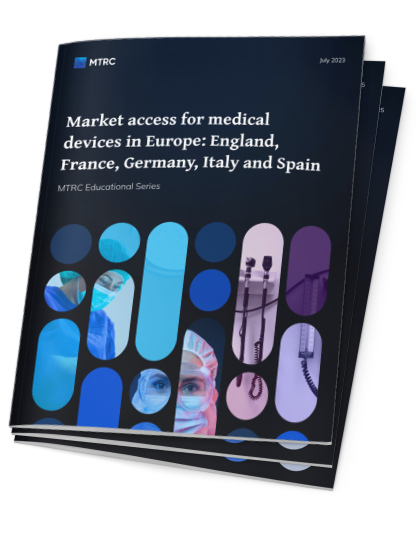Reimbursement analysis is performed to understand the current market access situation for medical technology.
This includes the availability of procedure codes, medical device reimbursement codes, understanding the payment mechanism and reimbursement tariffs, as well as policy (coverage) and HTA considerations.
Since reimbursement analysis for medical devices is always a starting point for med tech companies, an analysis thereof helps to establish whether technology is reimbursed or not. If it is reimbursed, is this tariff sufficient? Are there any restrictions for the use of the product? All these factors are considered as part of the reimbursement analysis process.
Once the reimbursement situation is clear, we work on a reimbursement strategy to determine how to establish or improve the reimbursement and general market access situation for medical technology.
How Does the Analysis Work?
A typical project includes several steps:
This includes specifics of the technology and procedure (mechanism of action, surgical access, duration of procedure, imaging required, pre- and post-procedure requirements, length of hospital and Intensive Care Unit stay, cost of device/procedure), and specifics of analysis (e.g., characteristics of patients, the necessity of day case or admitted hospital analysis)
Procedure coding is important as it defines payment mechanism and tariffs in any healthcare system. Our teams use official nomenclatures and coding manuals from coding/reimbursement authorities. Where possible, the findings are validated with other sources
This is another crucial step in the analysis. Payment model can vary significantly and can include reimbursement via Diagnosis-Related Groups (DRG), add-on reimbursement, innovation funding, unbundled (top-up DRGs), fixed payment for procedures, amongst others
Once the payment mechanism is clear, it is possible to define reimbursement tariffs. Both national and regional systems are analysed, where relevant (e.g., in Finland and Italy)
Reimbursement works hand in hand with funding and advisory frameworks in individual countries. For example, Diagnosis-Related Groups (DRG) and a good tariff can be in place, but authorities restrict the use of the method to a certain population. MTRC analyses the necessary policy frameworks, clinical guidelines by governmental bodies, and health technology assessments
Our teams always propose a free-of-charge teleconference to discuss the findings of reimbursement analysis, since results in multiple countries could be very complex and hard to understand. We offer the interpretation and inform the client about the existence of reimbursement barriers in particular countries
The next step would be to work on reimbursement strategy in the situations where payment, coverage, or HTA barriers have been identified for technology in individual markets
Get Insights from MTRC Free Analytical Reports
Explore free MTRC analytical reports and white papers for in-depth insights into reimbursement for medical technologies in Europe

Explore MTRC research papers:
- Market access for medical devices in Europe: England, France, Germany, Italy and Spain (Report #1)
- Market access for in-vitro diagnostic tests in Europe: England, France, Germany, Italy and Spain (Report #8)
- Case Study: Market Access for Mechanical Thrombectomy in England (Report #14)
- Innovative Payment Schemes for Medical Devices (Report #16)
- Reimbursement Pathways for Companion Diagnostic (CDx) Tests in Europe (Report #21)

Our Timelines Support Your Timelines
The analysis is delivered timely to inform your business decisions.
The typical timelines in our proposals are five to eight weeks long, depending on the workload of the team. We always deliver projects on time or ahead of schedule.
It is also possible to expedite the project (subject to price adjustment) to mere days or one to two weeks.
Get in Touch
Contact us to discuss your needs and learn about our services
